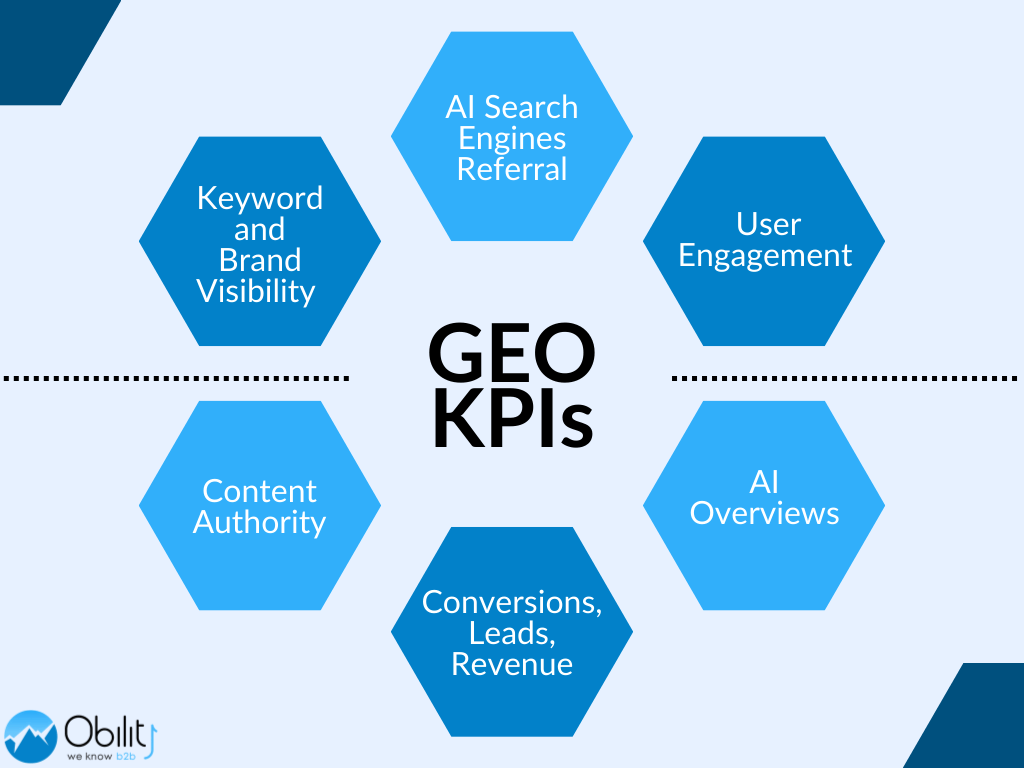SEO is evolving into something new. Generative Engine Optimization (GEO) is changing the way businesses approach search.
Traditional SEO metrics still matter, but GEO requires keeping many KPIs in mind. This blog covers the essential KPIs that marketers, SEO professionals, and B2B businesses should track to optimize for AI-driven search.
The 6 GEO KPIs to Monitor
1. Keyword and Brand Visibility
Why It Matters:
AI models pull information from various sources to generate responses. If your brand is frequently cited as a source, it signals strong authority and relevance, similar to ranking high in traditional search. Additionally, tracking impressions in AI-generated results helps measure how often your content appears, reflecting its reach in AI-driven search.
How to Measure:
- Manually track AI-generated responses by searching for your brand name, solutions, and variations of your keyword targets in ChatGPT, Bing Chat, and Google’s SGE.
- Use AI search monitoring tools like Profound to detect mentions.
- Conduct periodic AI searches on key industry topics to see if your content appears.
- Compare citation frequency and impression trends over time to assess brand visibility.
2. AI Search Engine Referral
Why It Matters:
AI-driven search platforms are becoming a major source of organic visitors. Tracking how many users arrive at your site from AI-generated answers helps measure GEO success. However, AI-generated summaries can sometimes provide answers without directing users to a website, leading to “zero-click searches” so manually review (for now!) of where your site is cited is key.
How to Measure:
- Segment AI referral traffic in Google Analytics by filtering for sources like chat.openai.com and Bing Chat.
- Analyze CTR, conversions, and user behavior from AI-driven visitors.
- Compare AI-generated traffic to traditional organic search.
- Manually review AI answers for your top target queries.
3. AI Overviews
Why It Matters:
AI overviews summarize content directly in search results, often reducing the need for users to click through to a site. Understanding how often your content appears in these overviews helps gauge AI-driven visibility.
How to Measure:
- Compare AI overview visibility across different queries for you and your competitors, using third-party tools like Semrush.
- Align AI visibility data with Google Search Console metrics for clicks, impressions, and CTR.
- Track gains and losses in AI Overview visibility over time to estimate the overall impact.
4. On-Site Engagement Metrics
Why It Matters:
Even if users arrive from an AI-generated answer, engagement metrics indicate whether they find your content useful. Bounce rate, average time on page, and pages per session help evaluate user intent and content effectiveness.
How to Measure:
- Compare engagement metrics for AI-sourced visitors versus traditional search visitors.
- Identify high-exit pages and optimize content to retain users longer.
5. Conversions, Leads & Revenue
Why It Matters:
The ultimate goal of GEO is revenue and conversions. Whether it’s newsletter sign-ups, form submissions, or demo requests, tracking AI-driven conversions helps measure ROI.
How to Measure:
- Set up goal tracking in Google Analytics to attribute conversions to AI-generated traffic.
- Compare conversion rates of AI-referred users versus other channels.
6. Content Authority
-
Why It Matters:
AI search models prioritize authoritative content that cites its sources and is quoted/link to from other websites. Ensuring that AI recognizes your content as reliable increases its chances of being cited in responses.
How to Measure:
- Monitor your domain authority and new external links pointing to your website.
- Track keyword rankings in AI search by testing queries, monitoring citations, and analyzing traffic from AI-driven sources.

How to Compare AI Performance With Traditional SERP Performance
AI search is constantly evolving, and the only way to keep up is to continually monitor progress against organic search. To compare traffic from AI-generated answers to traditional organic search, follow these steps:
-
Track AI-Sourced Traffic:
-
-
- Use Google Analytics or another analytics tool to segment traffic from AI sources (e.g., ChatGPT browsing, Bing Chat, Google SGE).
- Look for referrals like chat.openai.com, bing.com/chat, or search.google.com/sge or other AI sources.
-
-
Extract Click Data from AI Results:
-
-
- If the AI-generated response includes a link to your site, monitor click-throughs using UTM parameters (if applicable).
- For platforms like Google SGE (if available), use Google Search Console to see impressions and clicks from AI-driven search features.
-
-
Comparison With Traditional Organic Metrics:
-
-
- In Google Search Console, check for traditional organic search queries.
- Compare the AI-driven results to the standard search snippet to see if AI-generated answers drive more or fewer results.
-
-
Analyze Trends Over Time:
-
-
- Track changes monthly to see if AI optimization efforts improve performance.
- If AI traffic is significantly lower, adjust the content structure to encourage more clicks from AI-generated answers.
-
GEO focuses on visibility in AI-driven platforms. Tracking brand mentions, visibility, CTR, engagement, and conversions helps ensure your content is recognized and drives results.
GEO is constantly evolving, and staying ahead means continuously refining your strategy based on real data. As AI search platforms become a dominant source of information, tracking these KPIs will help ensure that your brand remains visible, trusted, and profitable.
Now that you have completed this GEO training, head to our GEO Readiness Quiz to test your GEO expertise!
